The Gore Memorial Coin-Set Silver Tankard
During the 17th and 18th centuries, few European countries other than Germany and then Prussia encouraged the production of silver articles for primarily decorative purposes. Certain large monumental pieces of this decorative baroque silver were crafted in southern Germany in principally Augsburg and Nuremberg, while further north in Berlin, Danzig and Konigsberg baroque silver in utilitarian forms was more commonplace. One such northern or Prussian form was coin-set beakers and tankards, presumably inaugurated in and around Berlin.
Many 17th and 18th century coin-set items are even today incorrectly thought of as Augsburg silver. These German coin-set items were frequently parcel gilt in nature and thus a visual palette of silver and gold coloration, albeit in a broader sense they are appropriately viewed as Prussian in origin. Similar such items crafted in the Polish sector of then Prussia were more typically entirely silver in tone.
Notre Dame donor of the University Club building as well as the Stein Collection, consisting of 122 mostly porcelain steins and with The Gore Memorial Silver Coin-Set Tankard as a primary focal point, was Robert H. Gore, Sr., whose career was as engrossing as his collection. Starting as a janitor in Owensboro, Kentucky, Mr. Gore made his initial fortune by incorporating life insurance with newspaper subscriptions in Chicago and soon enlarged his business span to an area from San Francisco to London.
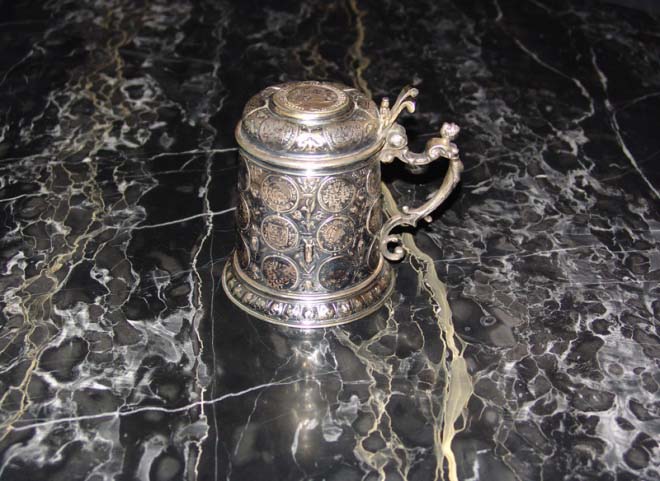
With business acumen and financial wizardry he eventually parlayed this investment into an empire of real estate, newspapers, construction, banking, industry and horticulture. A benefactor of many religious, medical and welfare institutions, Gore donated the University Club as a memorial to his deceased wife, Lorena Caroline Haury Gore, who during earlier years resided in Evansville and Terre Haute, Indiana.
The Robert H. Gore, Sr. Stein Collection was housed in two specially-built, open-arch glass cases. One divided the Club’s entrance and its sunken Rathskeller dining room. The other divided the dining room and the lounge. Both were lighted and visible from either side and sat comfortably at the University Club on the campus at Notre Dame from the 1960s until 2007. At that time the Club building was scheduled for demolition and replacement with a new engineering facility, now a fete accompli.
And while identified as Augsburg in origin and presumably of circa 1670 origin, with 32 coins of the early 17th century and without silver hallmarks, those responsible for The Gore Memorial Silver Coin-Set Tankard were unfortunately mistaken on all four counts. It wasn’t from Augsburg, it wasn’t of 1670 vintage, the dates of the 32 coins range from the year 1519 to 1763 and, in fact, the tankard is hallmarked. (So much for the aesthetic knowledge of those who for generations passed through the hallowed halls of Notre Dame.)
That said, the precise origin of The Gore Memorial Silver Coin-Set Tankard is less than entirely certain. The two hallmarks, a fish in an oval and the initials Rs in a double square, are unquestionably a city mark and a maker’s mark, respectively. Most likely the city mark is that of 18th century Wernigerode which is located near Braunschweig, with Hannover just off to the west. The holy grail of German hallmarks is Marc Rosenberg’s Der Goldschmiede Merkzeichen four volume treatise first published in 1890. A thorough review of Rosenberg’s publication suggests that while Wernigerode is likely the city of origin, it’s not practicable to definitively exclude Danzig for which a somewhat similar fish hallmark was utilized as an assay mark.

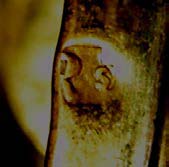
Unfortunately while Der Goldschmiede Merkzeichen is quite complete both as to city and maker’s marks, as with all such publications, less attention is devoted to smaller venues than is accorded to larger cities. In this regard, Rosenberg cites no maker’s marks in either Stolberg or Wernigerode, yet does cite the Wernigerode hallmark per se. However, the fact that a master silversmith with the initials Rs resided in the city of origin is indeed a tribute to The Gore Memorial Silver Coin-Set Tankard since it’s obvious by its aesthetics and construction that no time constraints were placed on the execution of this exquisite tankard. Over time as other items crafted by this master are studied and become know, further information will likely emerge.
Many consulted concur that the origin of The Gore Memorial Silver Coin-Set Tankard is most probably the fourth quarter of the 18th century. Many period coin-set tankards date in the range from 1690 to maybe 1790 or so, a relatively short-lived production period for these important Prussian silver works, thus encompassing mostly the 18th century. Obviously the strike of 1763 on the most recent coin set in the tankard is consistent with the fourth quarter of the 18th century tankard dating.
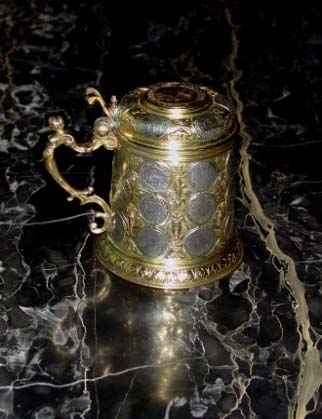
There is no doubt that The Gore Memorial Silver Coin-Set Tankard is of German and not Polish origin, albeit both locales were Prussian in origin. This is clear separate and apart from hallmark identification inasmuch as the Gore tankard today retains its original fire or mercury vapor, parcel gilt nature and thus its visual palette of silver and gold coloration is precisely the same as was rendered at its 18th century inception. Also interestingly, a prominent coin in the Gore tankard is the first memorial Martin Luther medal from 1617. The Protestant Reformation in the early to mid 1500s saw many Germans convert to Protestantism whereas Poland remained, and still is, solidly Roman Catholic.
As is reasonably imagined, most period coin-set Prussian tankards were disposed of for the melt value of their silver, particularly in view of the troubled past the region experienced over the ensuing centuries, including most notably:
- In 1657, after an invasion by the Swedes, Poland surrendered sovereignty over Ducal Prussia which then became the Kingdom of Prussia headed by the Hohenzollern line. Prussia’s power grew and in 1772, under King Friedrich II (Frederick the Great), consisted of the provinces of Brandenburg, Pomerania, Danzig, West Prussia and East Prussia (modern day East Germany, northern Poland, and a small portion of the Soviet Union).
- A major event in German history was the defeat of France in the Franco-Prussian War in 1871, making Germany a world power. It was during this war that, in 1870, Prussian Prime Minister Otto von Bismarck orchestrated the unification of the German states.
- The German Empire was established under Prussian leadership with Bismarck as Chancellor. Wilhelm II, the last of the Hohenzollern dynasty, became Emperor of Germany (Kaiser) in 1888 and ruled until Germany’s defeat in World War I.
- After defeat in World War I, Germany was forced to give up the Danzig Corridor to Poland and Danzig once again became a free city. This caused the province of East Prussia to be separated from the rest of Germany. The Rosenberg District was at this time contained in East Prussia.
After Germany’s defeat in World War II, West Prussia and East Prussia were divided by Poland and the Soviet Union. The old Rosenberg District in now part of the Itawa District of Poland.
Few such tankards of the nature and quality of craftsmanship of The Gore Memorial Silver Coin-Set Tankard today remain outside of known public collections and museums, a venue originally intended for the Gore tankard of Robert H. Gore, Sr.
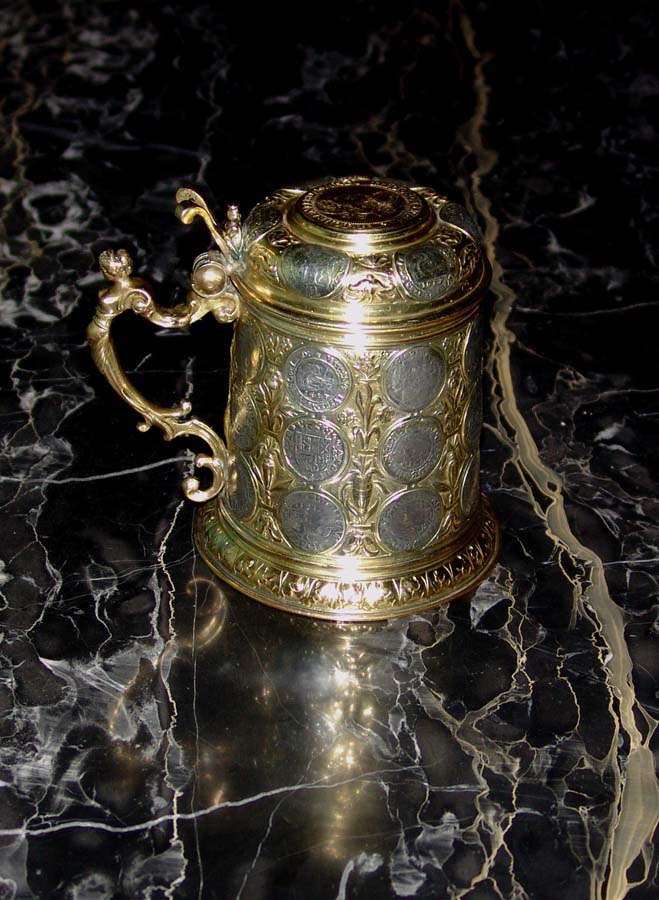
Coin Identification
Coin identification of The Gore Memorial Silver Coin-Set Tankard follows.
A Ferdinand 1657 (www.coinarchives.com)
Römisch Deutsches Reich. Ferdinand III1637-1657 Kaiser. Taler 1657 KB, Kremnitz vzgl.
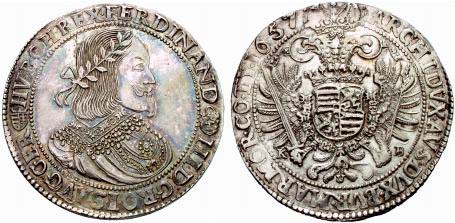
B Mareschal 1634
Jean du Caylar de Saint Bonnet, 1585-1636. Marquis de Toiras and Maréchal de France. Medal. AR. 1634. By Guillaume Dupré, his bust right, hair curled, a lace collar falling over armour, wearing the badge of the Order of St. ésprit, LE MARESCHAL DE TOYRAS, signed below, GVIL DUPRE F. 1634. Rev. The sun in majesty shines through clouds onto a coastal landscape, ADVERSA CORONANT, a beaded border to both sides. 57mm. BMC [Jones] 67. Maz II, 705. Kress 570. Trésor, pl.XIV, 3. Humphris 116. Hill, Medals of the Renaissance, pl.26, 9. Very rare. Cast of excellent quality, lightly toned.
De Toiras distinguished himself during the defence of the Ile de Ré against the Duke of Buckingham in 1627, and he was made Maréchal de France in 1630 following the siege of Casale. In 1633 he fell out with Richelieu and at the time this medal was made he was living in exile in Savoy, where he was promoted to Lieutenant General of Savoy. He was killed in action shortly afterwards. Of the 12 institutional specimens listed by Jones only the British Museum and the Bibliotèque National, Paris, have specimens in silver. More recently another specimen was offered in Baldwin’s London Auction 31 (14-15 October, 2002). Estimate of $5,000 in 2007, sold for $4,000.
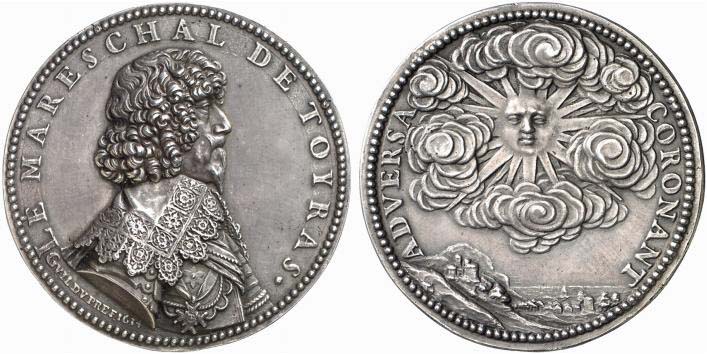
C Luther Swan 1617
Medal. Gilted Silver. 12.29 gm. Centennial of the Reformation, 1617. Luther and Johan with open Bible, radiant Hebrew letters above; Swan on reverse and date below. Whiting L86, Mers 875.
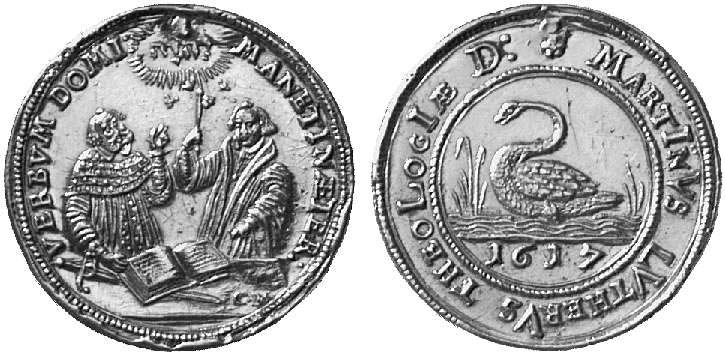
D Spain Carolvs Crown-Shield 1711
Römisch – Deutsches Reich, Haus Habsburg, Karl VI 1711 – 1740, Barcelona No.: 796 D=27 Mm 2 Reales 1712 shown, however date of tankard coins is 1711. Gekröntes Wappen. Rs: Gekröntes Monogramm. Calicó/Trigo 25. 5.41g.
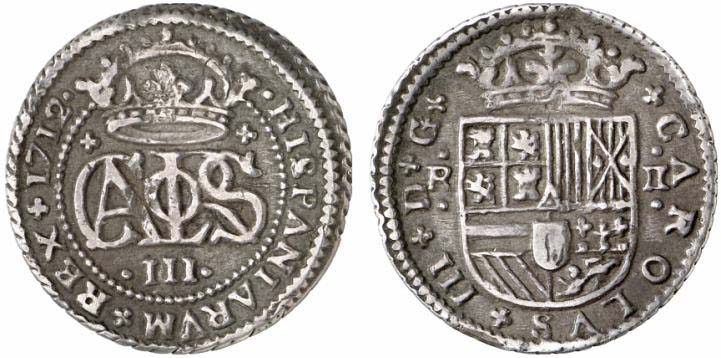
E German Double Shield Eagle (Clergy) (1519)
Several varieties of this medal are seen in the tankard.
Öttingen. Wolfgang und Joachim 1477-1520. Batzen 1519. Schulten 2587, Löffelholz 47. In dieser Erhaltung selten.
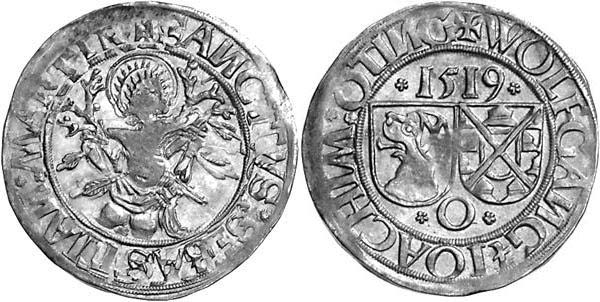
Pfalz-Neuburg. Batzen 1519. Schulten 2757. Kl. Randfehler.
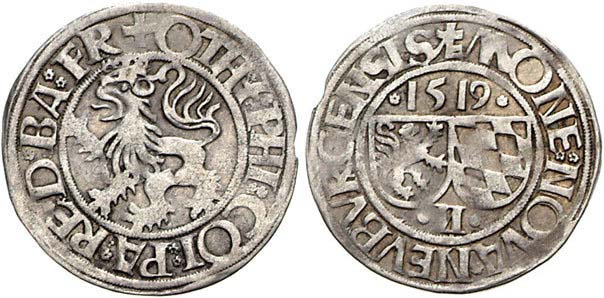
Salzburg. Erzbischof Leonhard von Keutschach, 1495–1519. Batzen 1519. Umschrift endet SALZ Zwei Wappenschilde mit Stifts- und Familienwappen, unten L und oben die Jahreszahl. Rs. Brustbild des Stiftsheiligen. 2,75g. BR 519. Pr. 114. Schulten 4255.
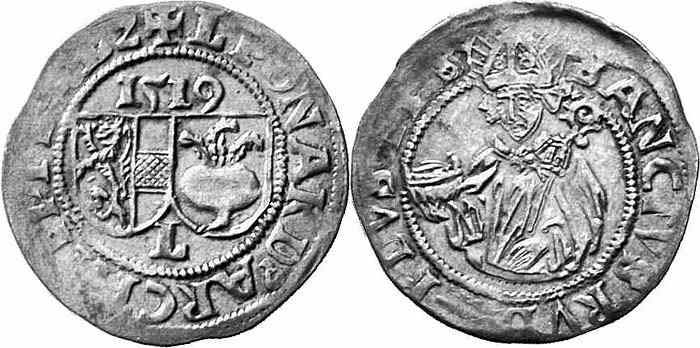
F Wernigerode (Stolberg) Carl Ludwig Stag 1763
Stolberg. Friedrich Botho und Karl Ludwig 1761-1768. 1/6 Taler 1763, C-Stolberg. Dreifach behelmtes Wappen / Hirsch vor Säule. Friederich 1967. Selten, min. Zainende.
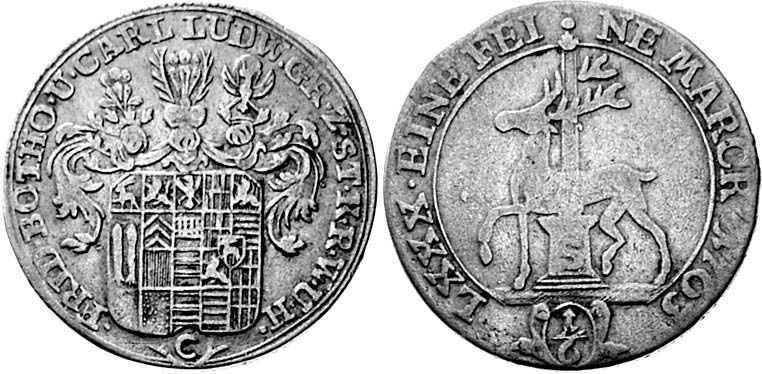
Coin Configuration
Coin configuration of The Gore Memorial Silver Coin-Set Tankard follows.
Please see the following photo – Thank you.
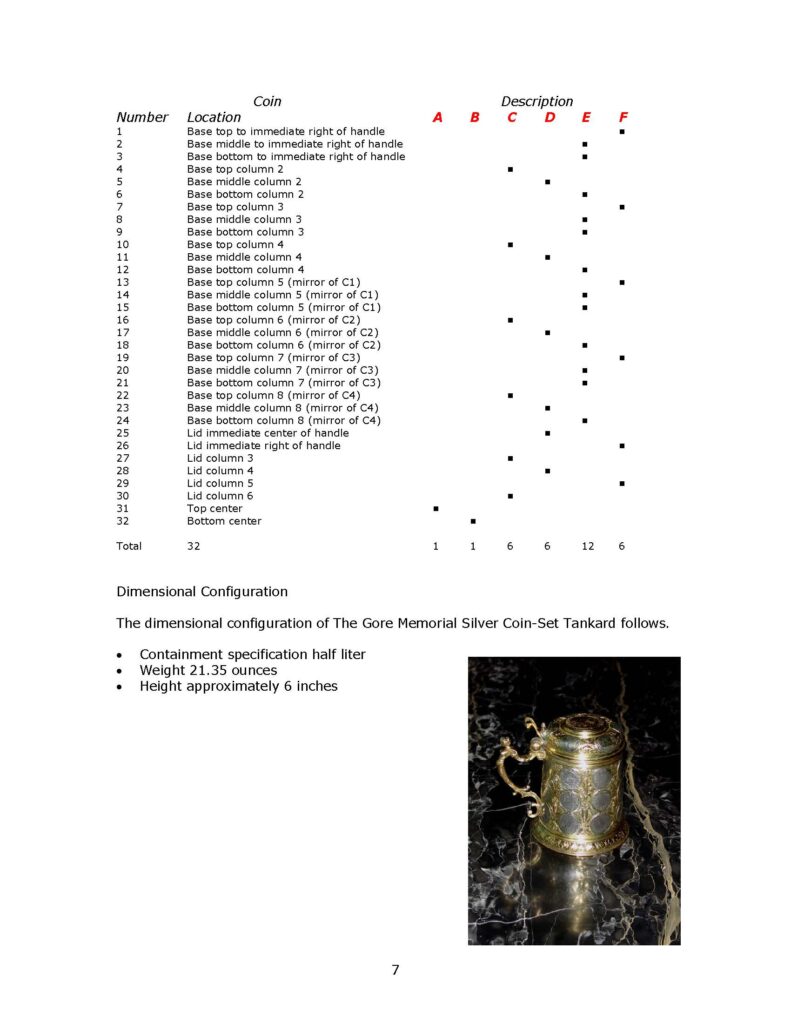

Leave a Reply